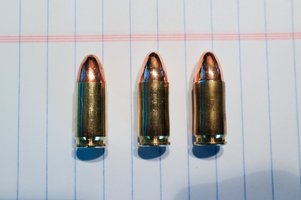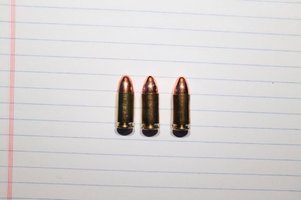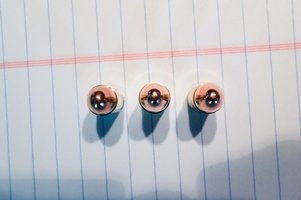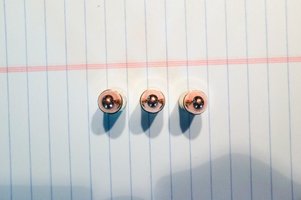Hi,
Setting up my Dillon XL 650 to do 9mm 115gr run, for my first time reloading and had some basic questions on seating and crimping adjustments.
The easy one...For the seating, Hornady book says C.O.L. of 1.1 for FMJ RN. Lyman's says 1.09 OAL, but for a jacketed HP. I have Berry's RN .356 bullets. Their website says 1.13. I have set my die for 1.13. I'm figuring that I sure use the Berry's specification, right?
For crimping... I'm not sure how far to crimp. I have clearly removed the bell, but am not sure what I have is ok. The two cases that I'm trying (different manufacturers, as I figure I don't care if I mess them up) have a diameter in the center of .373 and .374. At the edge of the case, I have one with .379. The other, I did a quarter turn more of the die and it is .377. Neither seem to be over crimped, but I'm not sure how much to do.
Looking at a Winchester UMC bullet that I have, with an OAL 1.1, the diameter is .382 and at the edge it is .377. The edge of the second case I did feel more like the factory bullet.
Any suggestions on how to set the crimp amount?
Will upload some pictures in a bit.
Setting up my Dillon XL 650 to do 9mm 115gr run, for my first time reloading and had some basic questions on seating and crimping adjustments.
The easy one...For the seating, Hornady book says C.O.L. of 1.1 for FMJ RN. Lyman's says 1.09 OAL, but for a jacketed HP. I have Berry's RN .356 bullets. Their website says 1.13. I have set my die for 1.13. I'm figuring that I sure use the Berry's specification, right?
For crimping... I'm not sure how far to crimp. I have clearly removed the bell, but am not sure what I have is ok. The two cases that I'm trying (different manufacturers, as I figure I don't care if I mess them up) have a diameter in the center of .373 and .374. At the edge of the case, I have one with .379. The other, I did a quarter turn more of the die and it is .377. Neither seem to be over crimped, but I'm not sure how much to do.
Looking at a Winchester UMC bullet that I have, with an OAL 1.1, the diameter is .382 and at the edge it is .377. The edge of the second case I did feel more like the factory bullet.
Any suggestions on how to set the crimp amount?
Will upload some pictures in a bit.




